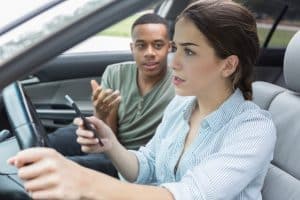

Often times, motorists object to streets being narrowed and bike lanes being added precisely because it achieves its intended purpose – it slows down traffic. So what are some ways for a city like Phoenix with 7-lane arterials to slow down traffic?ġ. But in reality, that kind of street only encourages faster traffic, which may seem good is you're running late, but it's bad for traffic safety, neighborhoods, getting people to walk and bike, and the general appeal of a city. The Sierra Club notes that, "recent studies have shown that narrow streets slow traffic and reduce vehicular crashes, increasing neighborhood safety." Often times, we think that the obstacle-free, wide street is optimal for driving. Slower traffic results in fewer accidents. Slow traffic is not only good for encouraging street life, it's also good for motorists, believe it or not. It's not so much about moving people along as it is for creating a space for humans to be humans, whether they are moving or not. It's about making the city accessible and safe for people to inhabit outside of their cars. A people-oriented city, on the other hand, is about creating spaces for people to walk, bike, stand, sit and gather in the public in ways that are safe and enjoyable. A car-oriented city is focused getting cars from point A to point B, and so everything is about large obstacle-free roads, more highways and ample parking space. Sounds good right? Well, not if you want your city to be people-oriented instead of car-oriented. This ample room for cars ensures that cars move along the roads very fast. Sometimes an arterial in Phoenix is 7 lanes wide, with three lanes going either way and a middle turn lane. The arterial roads in Phoenix, for example, are on average about the size of highways in other parts of the country and the world. But this has meant slowing down cars to accommodate slower modes of transportation. But recently, cities have started reclaiming roads as places for pedestrians, cyclists as well as vehicles. This is why we have highways, they're all about moving cars long distances at a fast rate. Nah, I'd just rather that conversation returned more to considering the false belief that pavements aren't routinely used by motorists and the strange idea that walkers should thank motorists but not vice-versa.For a long time now, the purpose of roads was to get people in cars to their destination as quickly and efficiently as possible. So I'm sorry for aiming the boot at if that really wasn't what was meant, but it did look like the argument put forward by the motoring lobby.Įdit: I just see that you realise how silly your point was and want us not to mention it. Of course, that's a toxic idea and leads easily to quasimotorway bypasses cutting rural areas off from their local towns and people saying that 18mph is too fast to cycle along any town streets.

Plenty of people do really suggest that town streets are for town business (Royston Vasey?) and not also for getting from A to B. I would have bet good money that no-one else would have given that definition (of course, now plenty would just to make a point). I'm pretty sure that the meaning given above is unusual, stretched to the point of distended, and not one shown in any dictionary, including such things as drunkenness and just aimlessly spending time being. You choose to emphasis the meaning that supports your views rather than the meaning that the op clearly meant, and which most people would understand. What load of tosh that just makes you look petty.


 0 kommentar(er)
0 kommentar(er)
